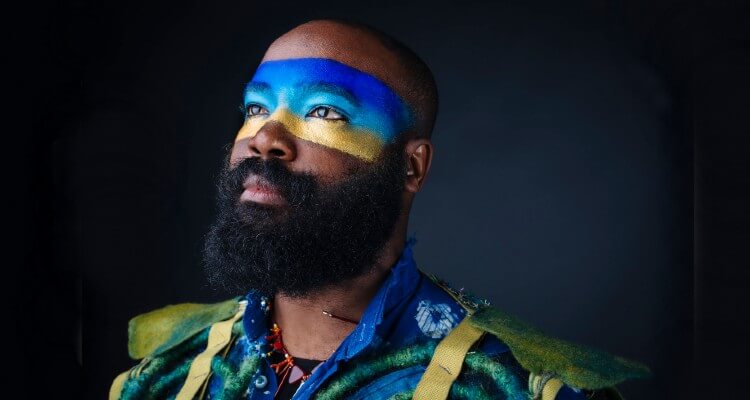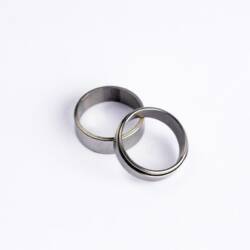How the Future Will Be Sexually Fluid
A world of endless possibilities for self-identification is right around the corner.

Gender used to be limited to only male or female. Biological sex was similarly restricted to either this or that form of genitalia.
Even a person’s sexual orientation was confined to a narrow range: rarely acknowledging their full scope or that desires shift, change, increase, or decrease over time.
But that’s no longer the case.
Backed by scientific research, and a rapidly growing movement supporting everyone’s right to self-identify their gender and orientation, by all accounts human society is headed towards a future that is completely, and gloriously, fluid.
We’ve always been more than two
But first, let’s set the stage. By gender, I’m referring to what is now predominantly regarded as a social construct: that what we used to consider masculine and feminine is something our cultures have simply made up.
Why this has happened is complicated, to put it mildly, but the reality is that human beings aren’t, and have never been, an either/or species when it comes to gender.
A perfect example of which can be found by looking at what, in this or that country, is considered feminine or masculine behavior or aesthetics compared to other parts of the world.
Male-identified hand-holding, for instance, is common in many Arabic countries, while in Western society it’s often considered un-masculine.
What about sex?
Biological sex to be specific: genitals and all that. Got news for you, there too the concept of us being a solely binary species has been debunked.
Some scientists have even suggested there may be as many as five types. But this still might be on the low side.
As Arthur Arnold, who studies the subject at the University of California, Los Angeles, put it to Scientific American: “I actually think that there are more sex differences than we know of. ”
And just as gender and biology have expanded from being either/or, so too as our understanding of sexual orientation.
After all, if there are more than two genders or two forms of genitalia, then it follows that limiting us to being either straight, gay, or bisexual just doesn’t add up.
We’re also accepting that orientation can involve a lot more than just sex. Emotional and not just physical attraction, degree of arousal—or none at all—reflected by the recognition and self-identification of sapiosexuality, demisexuality, allosexuality, aromantics, skoliosexuallity, and more.
And better than more: this already long list gets longer and longer with each forward step humanity makes.
Plus, any or all of these can change over the space of a minute, an hour, a year, or as long as decades at a time.
Gone are the days of the narrowly-focused Kinsey scale, with more inclusive sexual orientation models, like the Multiple Continua or the Fluid-Continuum better reflecting reality.
So what does accepting the fluidic nature of gender, biology, and sexual orientation have to do with a better future? Well, it has to everything to do with the power and potential for limitless self-identification
Being, and loving, who you are

It’s a question I’ve asked a few times before in other articles but, as it pertains a great deal with what we’re talking about here, I’m going to ask you again: who are you?
Take a bit of time to examine your answer. For some, it might have been an occupation; for others where they live or where they were born. Or maybe it came from a family religion—or which sports your root for.
For most of you, the words you chose will consciously or subconsciously reflect a solidified concept of identity. But here’s another question: is that who you really are or is that a societal role you’ve taken on?
Back to sex, gender, and orientation: if those aren’t rigid concepts then you have the right to reject that arbitrarily confining language and instead replace it with your own must more accurate definition of who you really are—even if you modify it today, tomorrow, or a year from now to reflect how you, too, have changed.
It’s perfectly natural to have trepidations about this, as wanting to stratify and categorize everything we see and do, and how we consider others, has been hardwired into our brains for millennia. But as we gain greater awareness that human emotions, desires, sex, gender—to name those few—can’t be quantified then they shouldn’t be.
Technology as a force for sexual self-identification

As social media continues and the like continues to predominate our personal interactions, its ability for people to put themselves out there as who they truly are could be a powerful kick in the cultural pants towards even greater widespread fluidic acceptance.
The cherry on top, social media’s inherent ability to be tweaked or altered at a moment’s notice is a perfect demonstration of how our sexual and gender is changeable over time.
This is fine and good for not-in-person interactions, but Augmented Reality, with its ability to real-time share selective personal information with another person, looks to cover personal encounters quite well. The operative word there being “selective” as it will hopefully be up to you and you alone about what you want people to digitally know about you.
Don’t forget virtual reality’s wholly artificial realities, either: where anyone can be whoever and even whatever they want to be.
Besides being an ideal erotic wonderland chocked full of fluidic sex and gender possibilities, the prevalence of VR could make it damned hard to look at the away-from-virtual-reality world in anything less than a mutably self-expressive way.
Speaking personal truth to power
Putting technology aside, there are also copious amounts of social evidence that a self-empowering future is well on its way.
Just look at how using the singular they/them to replace he/she, formerly isolated to a few trans and genderqueer activists, is appearing practically everywhere. With Merriam-Webster picking they as their 2019 Word of the Year.
Even Time Magazine has seen the light, dedicating an entire 2017 issue to the subject of gender fluidity. In one article, Sara Oswalt of the University of Texas at San Antonio shared the following:
In older generations, people were often told what feelings to have. The college students I’m working with today really say, ‘It’s okay for me to be me, whatever that is. ‘
You should be who you are
Normally, I’d end an article like this with a heartfelt rallying cry about why embracing fluidity would be a vital, and long overdue step towards having an enlightened society that celebrates uniqueness, creativity, and compassion rather than forcing people into tiny gender, sex, or orientation boxes.
But I’d never be able to say it better than Mason, a high school student interviewed in that same issue of Time, ever could:
I know it’s one of those things in life that could be easier, but I know who I am. And I’d rather be who I am and be authentically me than try to fit into one of those crappy little boxes. I have a great box that I have made for myself.
Image sources: Rachel Lyra Hospodar, Ted Eytan, Beatrice Murch
Leave a reply
You must be logged in to post a comment.

















